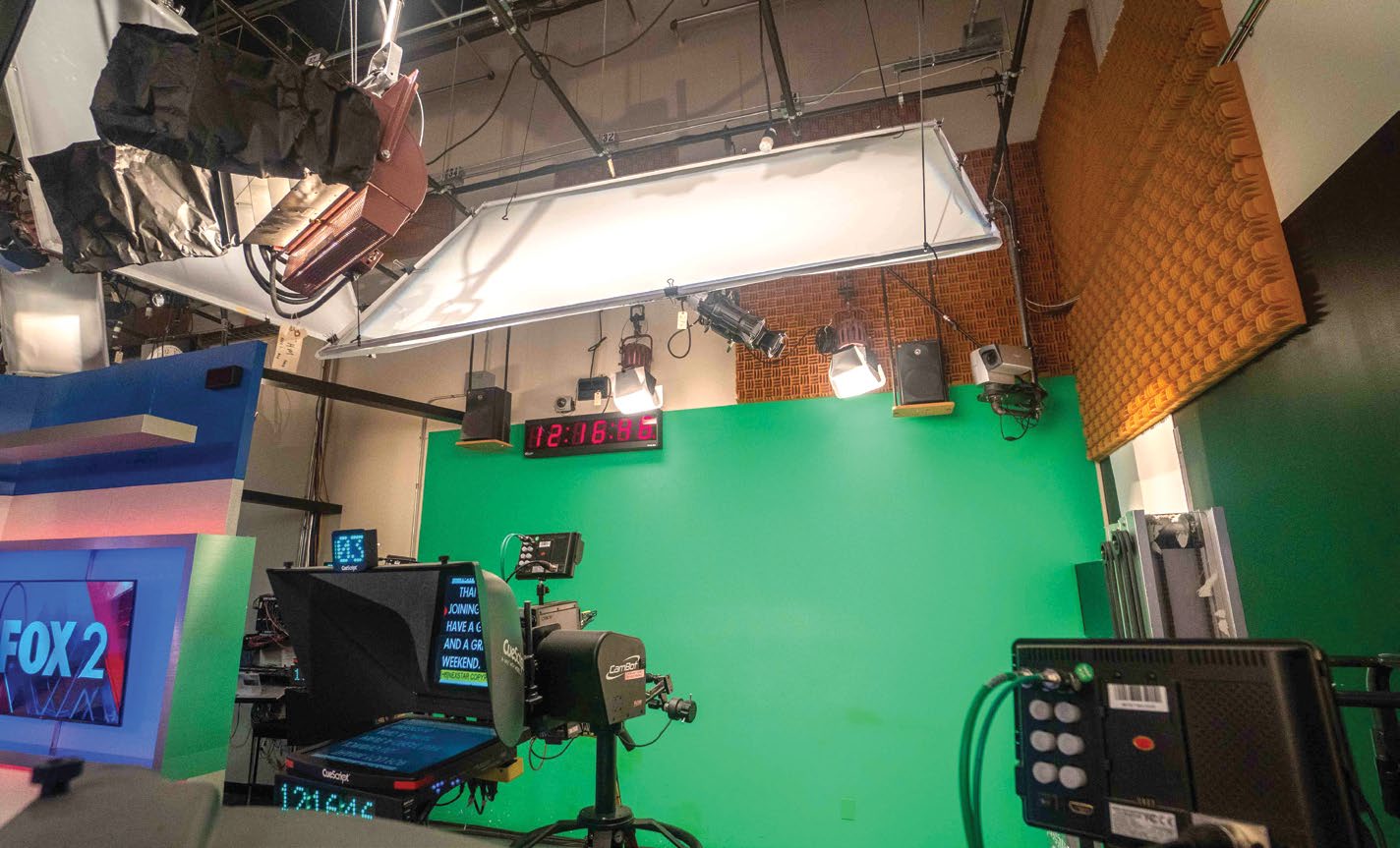Lighting the Newsroom
The lighting in news studios is designed to achieve a nondramatic look without needing to make adjustments. Talent on camera should be able to move around freely; and cameras should be able to capture a variety of angles on each set once lighting is in place. For this reason, long trusses are positioned among an expansive overhead grid with countless mounting points for lights. Not only is the number of available mounting points greater this way, but there are also no stands to avoid on the ground. The goal is not only to have subjects lit for every setup, but to have backgrounds lit and ready to go as well. Because news is not a dramatic lighting look, having several lights installed to fill the space is also reason for a large grid.
MANAGING THE SPREAD

Typically, lights are set across trusses for backdrops to evenly light green or blue screen behind a news desk setup. The lights are set back from the backdrop about half the height of the backdrop so as to spread the light without having any darker spots. For the best keying job, you want as evenly a spread as possible. Lighting in newsrooms usually is also preferred to be softer and this can apply to the backgrounds as well. The larger the source, the more you can soften without losing too much intensity or throw. The backdrops are not always a chroma key background—now a lot of high-resolution screens are the actual background elements. This makes spot reading essential so as to avoid any hot screens behind your subjects when exposing on camera.
In front of the set lights, toward camera, there are backlights for the subjects. These can be a little harder as they separate your subjects from the background. Finally, you have soft key lights. You may find an array of lighting fixtures up in the grid.
To maintain control and direction of specific lights, specifically key lights, some lighting designers choose fresnel units. These have lenses that help directionality, usually equipped with barn doors, and you can narrow or widen the beam. Some of the more common fresnels found in a newsroom are those from ARRI, Fluotec and Mole LEDs. Other sets go all panels—ARRI Skypanels, Litepanels, etc. That way they’re using all soft lights and fixtures that can have chimeras built on top to avoid having to rig up diffusers.
It is usually preferred to rig as little to the grid as possible while still meeting all the lighting needs. Besides mounting a few solids to separate sources and control spill, all that should be up there are the units themselves. Being able to attach soft boxes to them helps keep the amount of hardware above to a minimum. A lot of panels are naturally soft lights, so being able to add on a soft box with a variety of diffusion options gets the light quality to an ideal place quite easily.
NEW TOOLS
Tools available in lighting now save a tremendous amount of time and energy in the news space. LED technology makes these sets much cooler and draw less power. They also offer flexibility with color temperature and intensity, all easily adjustable through DMX. Sure, you could connect everything to a dimmer board years ago, but now you can dial in even more in terms of hue, saturation, etc.
I was fortunate enough to demo the new ARRI Orbiter, which I think will be another major player in studio lighting, with even better color and offering hard light with a variety of mountable lenses. It seemed like a hybrid of a Skypanel and a little like the company’s L-series. I think more and more of these will start appearing—lights that become all you need in terms of color, hard and soft light, with a range of attachments to easily mount on the unit.
News is climbing in visual sophistication along with every other format and lighting technology is what is helping make it all possible. Lighting is used to create depth, execute color cues and light a variety of stages and subjects like never before. As LED lighting technology becomes even more versatile, the job of lighting a studio will only become easier, with more lighting tools and capabilities at our fingertips.
Julia Swain is a cinematographer based in California, whose narrative films include “Killing Animals,” “Jilted” and “Cassidy Red.” She continues to shoot on a variety of formats, seeking to create compelling visuals for every story and brand. She can be contacted through TV Technology.
Get the TV Tech Newsletter
The professional video industry's #1 source for news, trends and product and tech information. Sign up below.
